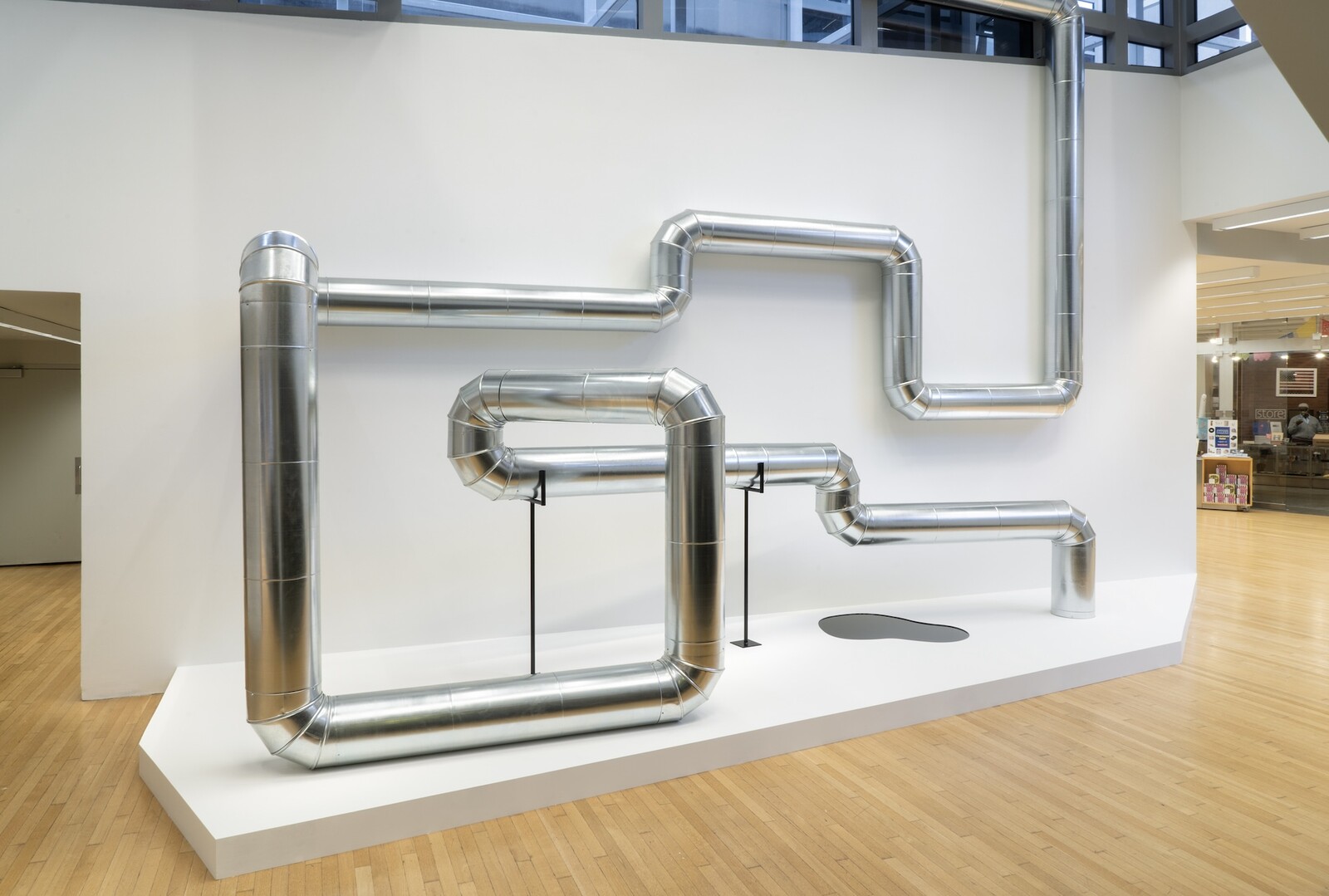Maria Hupfield: The Endless Return of Fabulous Panther (Biimskojiwan)
February 7–July 29, 2025
1871 N. High Street
The Ohio State University
Columbus, Ohio 43210
United States
T +1 614 292 3535
listweb@wexarts.org
February 7 through July 29, 2025, the Wexner Center for the Arts at The Ohio State University will present spring exhibitions respectively spotlighting Nancy Holt (1938–2014) and Maria Hupfield, artists whose work, across various media, blurs the lines between contemporary art and such fields as architecture, engineering, performance, and fashion. An element of site-responsiveness in each artist’s work will yield a unique dialogue between the works on view and the center’s Peter Eisenman-designed architecture.
Over five decades, Holt rethought the possibilities of what art can be and where it can be found, addressing the ways that often invisible systems around us impact our view of the world. For Nancy Holt: Power Systems, the center has partnered with Holt/Smithson Foundation to develop the most extensive inquiry to date of the artist’s focus on these systems through immersive sculptural installations, previously unseen related drawings, and photographic series.
The Wexner Center currently offers a prelude to Holt’s gallery exhibition: an installation of her 1986 System Works sculpture, Pipeline, in the center’s lobby and adjacent outdoor areas. The ensuing presentation of Power Systems in the galleries highlights her consistent attention to literal and metaphorical flows of power.
“What you’ll see in this exhibition is a laser-focused study of these bodies of work,” notes Lisa LeFeuvre, executive director of Holt/Smithson Foundation and the curator of both spring exhibitions at the Wex. “So, when you come into the galleries, you will literally feel a heating system inside the galleries. You will literally stand within a fountain of light that connects the electricity that really guides our time in architecture to what we see in the galleries.”
Holt’s room-sized System Works are created with standard industrial materials that reveal the means devised to move air, heat, light, and energy through the built environment. The exhibition features the first posthumous presentation of Heating System (1984), a sculpture that exposes heating infrastructure and generates a “drawing” via a device that records changes in temperature and humidity on graph paper.
Power Systems also includes previously unexhibited works on paper, revealing Holt’s continuous practice of drawing and showing her ideas for both realized and unrealized System Works. Photography series such as Texas Claims (1969) and Time Outs (1985) and works such as the video sculpture Points of View (1974) and the feature-length video Revolve (1977), expand the consideration of systems to encompass sports, human-made land borders, and the human body.
Complementing Power Systems is Maria Hupfield: The Endless Return of Fabulous Panther (Biimskojiwan), which is dedicated to the work of the Toronto-based artist, who belongs to the Anishinaabek Nation from Wasauksing First Nation (Robinson Huron Treaty), Ontario.
Developing from Hupfield’s commission for the 2024 Toronto Biennial of Art, the exhibition creates an environment that focuses on the possibilities of sculptural materials, exploring how live performances resonate with multiple versions of the present.
Hupfield’s immersive installations move through sculpture, performance, and video to challenge assumptions that spiral around objects. Her exhibitions are experimental sites where perceptions are tested, shared, and questioned. For Hupfield, artworks are always commas and never full stops, and they are always in conversation with their physical and temporal surroundings.
The Endless Return of Fabulous Panther (Biimskojiwan) is a living sculpture, engaging with peoples, site, space, ideas, and materials. Its installation will overlay, twist, and respond to the center’s unique architecture, with its recurring motif recognizing the 12 ¼-degree divergence between the planning grids of Ohio State’s main campus and its home city of Columbus.
The center’s gallery spaces will hold a sensory exploration of water and place, of whirlpools (biimskojiwan in the Anishinaabe language) that anticipate the appearance of Fabulous Panther (miszhibizhiw)—in Anishinaabe oral traditions (aadizookaang), the most powerful underwater being known. Ignited by new performances and punctuated with documents of past performances, The Endless Return of Fabulous Panther (Biimskojiwan) is a generous invitation to think with other beings, with materials, and with time and space.



